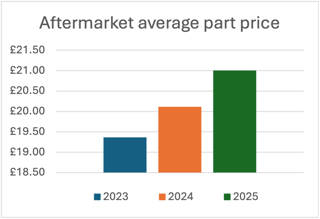Car dealers’ efforts to keep car buyers informed about plug-in hybrid (PHEV) and electric vehicles (EVs) have been boosted by The National Franchised Dealers Association’s (NFDA) publication of a new guide on the subject.
The NFDA has partnered with the Energy Saving Trust (EST), ZAP-MAP and the Office for Low Emission Vehicles (OLEV) to produce the 15-page guide, which dispels common myths about alternative fuel vehicles (AFVs) and offers clarification on key areas of concern for potential buyers.
NFDA director, Sue Robinson, said: “To ensure a consistent and long-term uptake of plug-in vehicles, it is essential that consumers understand all the benefits and implications of owning a plug-in vehicle.
“NFDA has partnered with key players in the sector to provide franchised dealers across the UK with the material they need to be able to inform the consumer.”
According to a statement issued by the NFDA to accompany today’s (December 14) launch of the NFDA’s Plug-in Vehicle Guide, the new resource “cements the Government’s commitment to working with the automotive industry to publish ‘guidance for sellers, dealers and auction houses’, as stated in the recently published Road to Zero strategy”.
Over 5,000 NFDA member dealers across the UK will receive the guide, providing them with the information they need to accurately inform their customers about plug-in vehicles.
There are five key sections to the guide:
• Types of plug-in vehicles: the guide describes different types of plug-in vehicles on the market including battery electric vehicles (BEV or pure EV), extended-range electric vehicles (E-REV) and plug-in hybrid electric vehicles (PHEV).
• Myth busting: answers a series of frequently asked questions to dispel myths regarding the battery of a vehicle, the charging process as well as how charging cars could affect utility bills.
• Charging: the charging process is explained. This includes the different types of charge points (slow, fast, rapid and ultra-rapid) and how to make the most of them depending on the car you drive. An illustration by Zap-Map shows all the charge points available in the UK.
• Energy Saving Trust (EST): the EST’s section outlines a number of key aspects that motorists should consider when planning to buy a plug-in vehicle.
• Grant and tax benefits: finally, the guide features a summary of the grants and tax benefits that the government has made available to the consumers to encourage the switch to plug-in cars.
Matthew Eastwood, the Energy Saving Trust’s head of transport, said, “Dealers have a huge part to play in making buyers aware of the benefits of buying a plug-in vehicle.
“Every year, more and more people seize the opportunity and make the change. EST are delighted to work with NFDA on this new guide to ensure that dealers and their customers have the facts they need immediately to hand in the showroom.
“The guide takes the confusion out of the types of plug-in vehicle, how they are charged, and the government grants and incentives available”.
Robinson added: “The whole retail automotive industry is embracing the latest developments in the car market, especially, alternative fuel types.
“Having consumers making informed decisions is instrumental to the success of our sector in the forthcoming years and NFDA will continue to work alongside key industry partners, the Government and our dealer members to ensure that customers will always receive as much guidance as possible when selecting their next car”.


















Login to comment
Comments
No comments have been made yet.